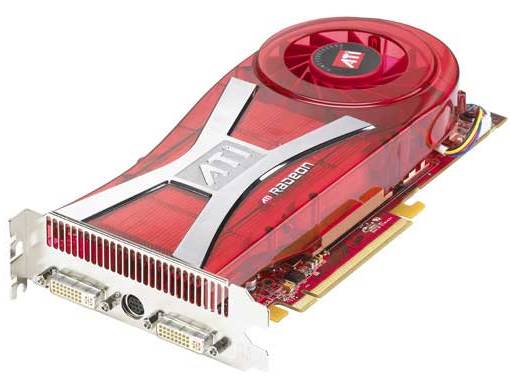ATI yields DX10 graphics performance crown
R600 can't beat Nvidia GeForce 8800 GTX, so takes on GTS

ATI's much delayed R600 graphics chip can't compete with Nvidia's six-month-old GeForce 8800 GTX. That's the shock news circulating the web following initial benchmarking of the chip.
Originally pencilled in for launch in autumn 2006 but now due out on 14 May, the R600 chip will be officially dubbed the Radeon HD 2900 XT. As with all ATI's flagship GPUs, it was designed to hit the market as the fastest available PC graphics processor.
However, Tech.co.uk has confirmed the accuracy of reports this week that the new GPU simply cannot match the performance of its key rival, the GeForce 8800 GTX.
The 2900 XT has been repositioned to take on the cheaper, less powerful members of the GeForce 8800 family. With a UK price of around £250 ($399 Stateside), ATI's first graphics card with full support for DirectX 10 will go toe-to-toe with the GeForce 8800 GTS, rather than the top-spec 8800 GTX.
Performance preview
According to ATI, the 2900 XT holds a slender performance advantage in most games over the GeForce 8800 GTS. Enthusiast website DailyTech backed this up with independent benchmark results comparing the two cards.
As cited there, highlights from the 2900 XT's specification list include 512MB of GDDR3 graphics memory running at 1.65GHz, a 512-bit memory interface (that's a first on any consumer graphics card) and a core frequency of 745MHz.
Although full details of the R600 GPU itself are not available, we can confirm the chip will be marketed as boasting 320 programmable shader units - significantly more than the 8800 GTX's 128 shaders.
Get daily insight, inspiration and deals in your inbox
Sign up for breaking news, reviews, opinion, top tech deals, and more.
Programmable shaders are arguably the most important part of a modern graphics chip. They are the units that enable many of the incredible visual effects seen in the latest PC games, including realistic water, flesh and hair.
However, with the latest generation of DirectX 10 graphics chips, ATI and Nvidia have taken very different approaches to shader design. For the 2900 XT, ATI has stuck with the vector-based shader architecture of its previous cards, while Nvidia claims the new scalar units in the 8800 are more efficient. In simple terms, the complexity of the latest graphics chips makes like-for-like comparisons near enough impossible.
The best laid plans...
ATI had originally planned to take on the 8800 GTX with a flagship board known as the Radeon HD 2900 XTX. Performance tweaks for the XTX were to include a core clockspeed boost to around 850MHz and a massive 1GB of GDDR4 memory running at over 2GHz. However, even with these enhancements, Nvidia's increasingly impressive GeForce 8800 GTX remained out of reach.
Without the ability to claim performance bragging rights and lumbered with all that pricey video memory, the XTX is very likely to be stillborn. It's thought the partner companies that produce and market retail boards based on ATI's video chipsets turned their noses up en masse at the XTX.
All in all, it's extremely bad news for both ATI and parent company AMD. Thanks to the lengthy six-month delay of the R600 GPU, Nvidia has had the high end all to itself since the GeForce 8800 launched last November. And with AMD simultaneously taking a beating from Intel's Core 2 processors, times are extremely tough for the beleaguered AMD-ATI empire.
Point your browsers back to Tech.co.uk later this month for full coverage of the official launch of the Radeon HD 2900 XT.
Jeremy Laird
Tech.co.uk was the former name of TechRadar.com. Its staff were at the forefront of the digital publishing revolution, and spearheaded the move to bring consumer technology journalism to its natural home – online. Many of the current TechRadar staff started life a Tech.co.uk staff writer, covering everything from the emerging smartphone market to the evolving market of personal computers. Think of it as the building blocks of the TechRadar you love today.